*NURSING > TEST BANK > Test Bank Pharmacology A Patient-Centered Nursing Process Approach, 11th Edition by Linda E. McCuist (All)
Test Bank Pharmacology A Patient-Centered Nursing Process Approach, 11th Edition by Linda E. McCuistion Chapter 1-58 NEW UPDATE
Document Content and Description Below
Test Bank Pharmacology A Patient-Centered Nursing Process Approach, 11th Edition by Linda E. McCuistion Chapter 1-58 NEW UPDATE-1. All of the following would be considered subjective data, EXCEPT: a.... Patient-reported health history b. Patient-reported signs and symptoms of their illness c. Financial barriers reported by the patient’s caregiver d. Vital signs obtained from the medical record ANS: D Subjective data is based on what patients or family members communicate to the nurse. Patient-reported health history, signs and symptoms, and caregiver reported financial barriers would be considered subjective data. Vital signs obtained from the medical record would be considered objective data. DIF: Cognitive Level: Understanding (Comprehension) TOP: Nursing Process: PlanningMSC: NCLEX: Management of Client Care 2. The nurse is using data collected to define a set of interventions to achieve the most desirableoutcomes. Which of the following steps is the nurse applying? a. Recognizing cues (assessment) b. Analyze cues & prioritize hypothesis (analysis) c. Generate solutions (planning) d. Take action (nursing interventions) ANS: C When generating solutions (planning), the nurse identifies expected outcomes and uses the patient’s problem(s) to define a set of interventions to achieve the most desirable outcomes. Recognizing cues (assessment) involves the gathering of cues (information) from the patient about their health and lifestyle practices, which are important facts that aid the nurse in making clinical care decisions. Prioritizing hypothesis is used to organize and rank the patient problem(s)identified. Finally, taking action involves implementation of nursing interventions to accomplish the expected outcomes. DIF: Cognitive Level: Understanding (Comprehension)TOP: Nursing Process: Nursing Intervention MSC: NCLEX: Management of Client Care 3. A 5-year-old child with type 1 diabetes mellitus has had repeated hospitalizations for episodes ofhyperglycemia. The parents tell the nurse that they can’t keep track of everything that has to be done to care for their child. The nurse reviews medications, diet, and symptom management withthe parents and draws up a daily checklist for the family to use. These activities are completed inwhich step of the nursing process? a. Recognizing cues (assessment) b. Analyze cues & prioritize hypothesis (analysis) c. Generate solutions (planning) d. Take action (nursing interventions) ANS: D Taking action through nursing interventions is where the nurse provides patient health teaching,drug administration, patient care, and other interventions necessary to assist the patient in accomplishing expected outcomes. DIF: Cognitive Level: Understanding (Comprehension)TOP: Nursing Process: Nursing Intervention MSC: NCLEX: Management of Client Care 4. The nurse is preparing to administer a medication and reviews the patient’s chart for drug allergies, serum creatinine, and blood urea nitrogen (BUN) levels. The nurse’s actions arereflective of which of the following? a. Recognizing cues (assessment) b. Analyze cues & prioritize hypothesis (analysis) c. Take action (nursing interventions) d. Generate solutions (planning) ANS: A Recognizing cues (assessment) involves gathering subjective and objective information about thepatient and the medication. Laboratory values from the patient’s chart would be considered collection of objective data. DIF: Cognitive Level: Understanding (Comprehension) TOP: Nursing Process: Assessment MSC: NCLEX: Management of Client Care 5. Which of the following would be correctly categorized as objective data? a. A list of herbal supplements regularly used provided by the patient. b. Lab values associated with the drugs the patient is taking. c. The ages and relationship of all household members to the patient. d. Usual dietary patterns and food intake. ANS: B Objective data are measured and detected by another person and would include lab values. Theother examples are subjective data. DIF: Cognitive Level: Understanding (Comprehension) TOP: Nursing Process: Assessment MSC: NCLEX: Management of Client Care 6. The nurse reviews a patient’s database and learns that the patient lives alone, is forgetful, and does not have an established routine. The patient will be sent home with three new medications to be taken at different times of the day. The nurse develops a daily medication chart and enlistsa family member to put the patient’s pills in a pill organizer. This is an example of which element of the nursing process? a. Recognizing cues (assessment) b. Analyze cues & prioritize hypothesis (analysis) c. Take action (nursing interventions) d. Generate solutions (planning) ANS: C Taking action (nursing interventions) involves education and patient care in order to assist thepatient to accomplish the goals of treatment. DIF: Cognitive Level: Applying (Application)TOP: Nursing Process: Nursing Intervention MSC: NCLEX: Management of Client Care 7. A patient who is hospitalized for chronic obstructive pulmonary disease (COPD) wants to go home. The nurse and the patient discuss the patient’s situation and decide that the patient may gohome when able to perform self-care without dyspnea and hypoxia. This is an example of which phase of the nursing process? a. Recognizing cues (assessment) b. Analyze cues & prioritize hypothesis (analysis) c. Take action (nursing interventions) d. Generate solutions (planning) ANS: D Generating solutions (planning) involves defining a set of interventions to achieve the most desirable outcomes, which, for this patient, means being able to perform self-care activitieswithout dyspnea and hypoxia. DIF: Cognitive Level: Understanding (Comprehension) TOP: Nursing Process: PlanningMSC: NCLEX: Management of Client Care 8. A patient will be sent home with a metered-dose inhaler, and the nurse is providing teaching.Which is a correctly written expected outcome for this process? a. The nurse will demonstrate the correct use of a metered-dose inhaler to the patient. b. The nurse will teach the patient how to administer medication with a metered-doseinhaler. c. The patient will know how to self-administer the medication using the metered-dose inhaler. d. The patient will independently administer the medication using the metered-doseinhaler at the end of the session. ANS: D Expected outcomes must be patient-centered and clearly state the outcome with a reasonabledeadline and should identify components for evaluation. DIF: Cognitive Level: Applying (Application) TOP: Nursing Process: PlanningMSC: NCLEX: Management of Client Care 9. The nurse is generating solutions (planning) for a patient who has chronic lung disease and hypoxia. The patient has been admitted for increased oxygen needs above a baseline of 2 L/min.The nurse generates an expected outcomes stating, “The patient will have oxygen saturations of >95% on room air at the time of discharge from the hospital.” What is wrong with this goal? a. It cannot be evaluated. b. It is not measurable. c. It is not patient-centered. d. It is not realistic. ANS: D [Show More]
Last updated: 1 year ago
Preview 1 out of 373 pages
Instant download

Instant download
Reviews( 0 )
Document information
Connected school, study & course
About the document
Uploaded On
Feb 06, 2023
Number of pages
373
Written in
Additional information
This document has been written for:
Uploaded
Feb 06, 2023
Downloads
0
Views
87

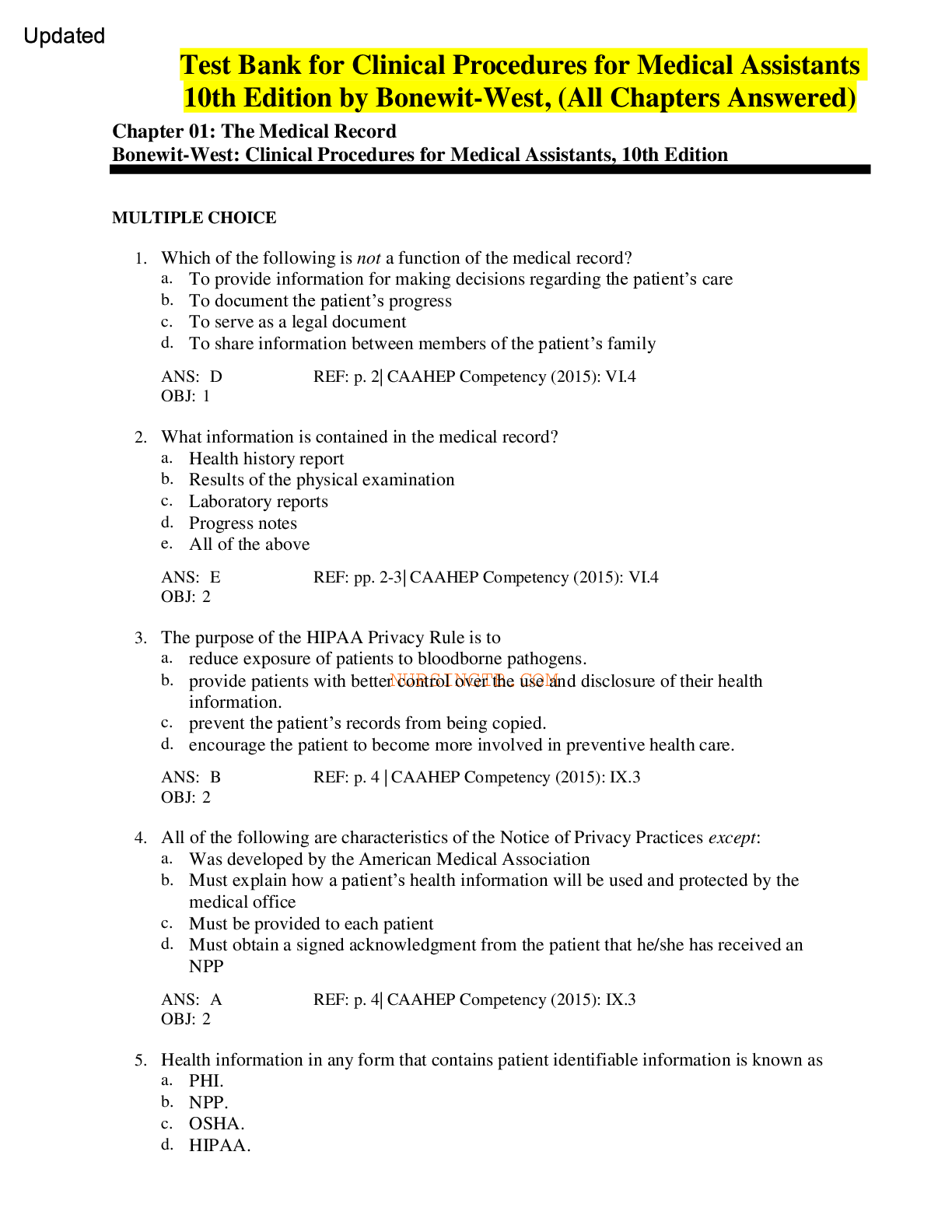
 Including NCLEX Exam Q&As With Rationales.png)
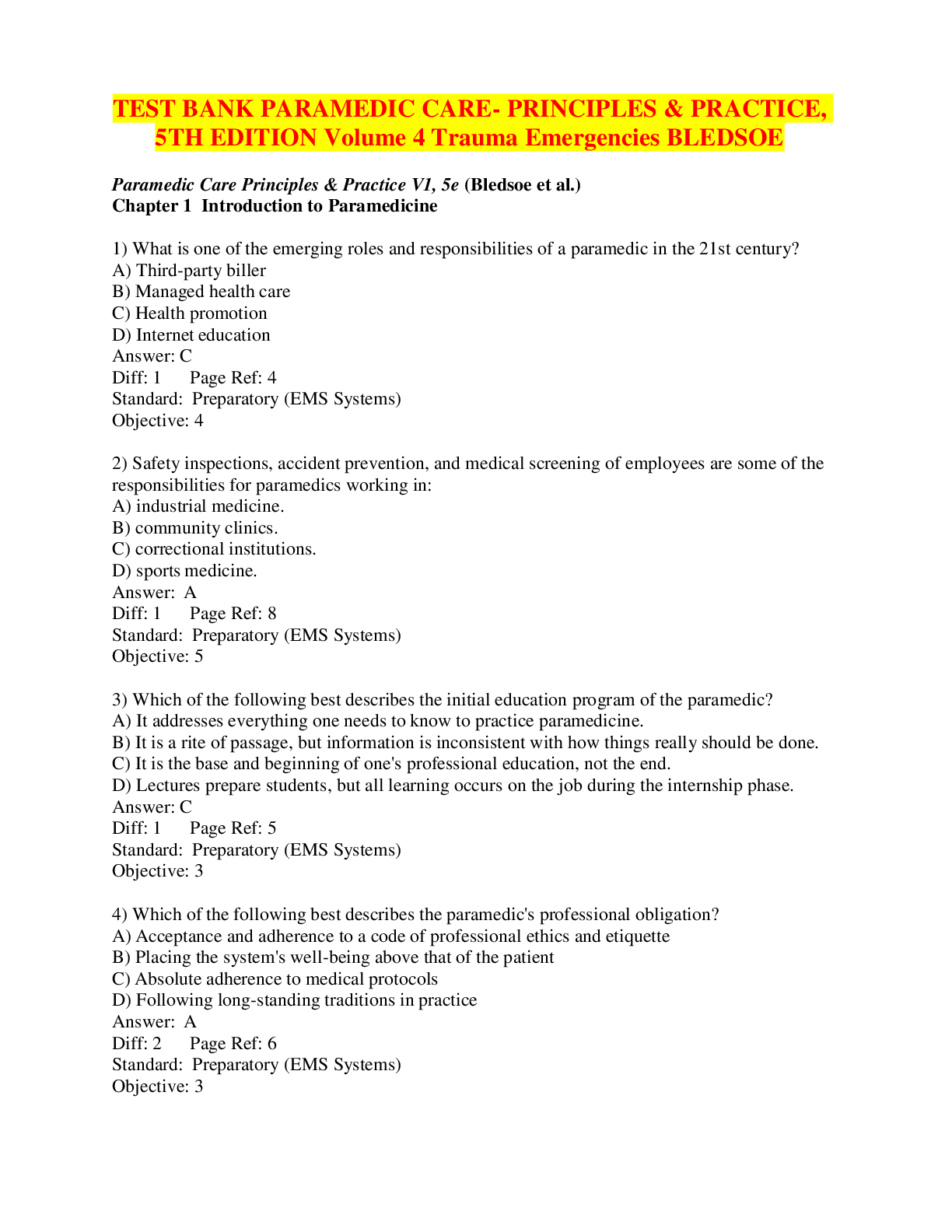



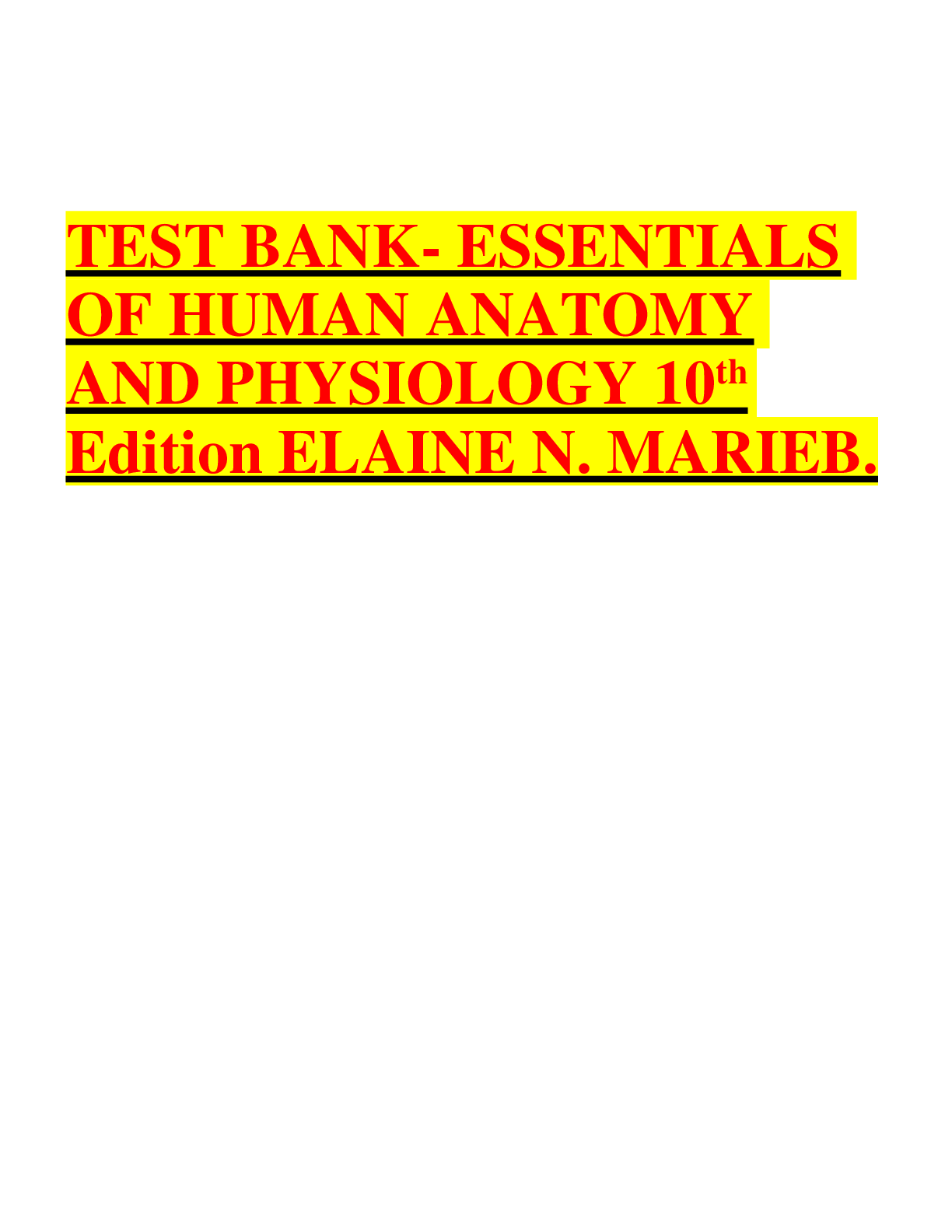

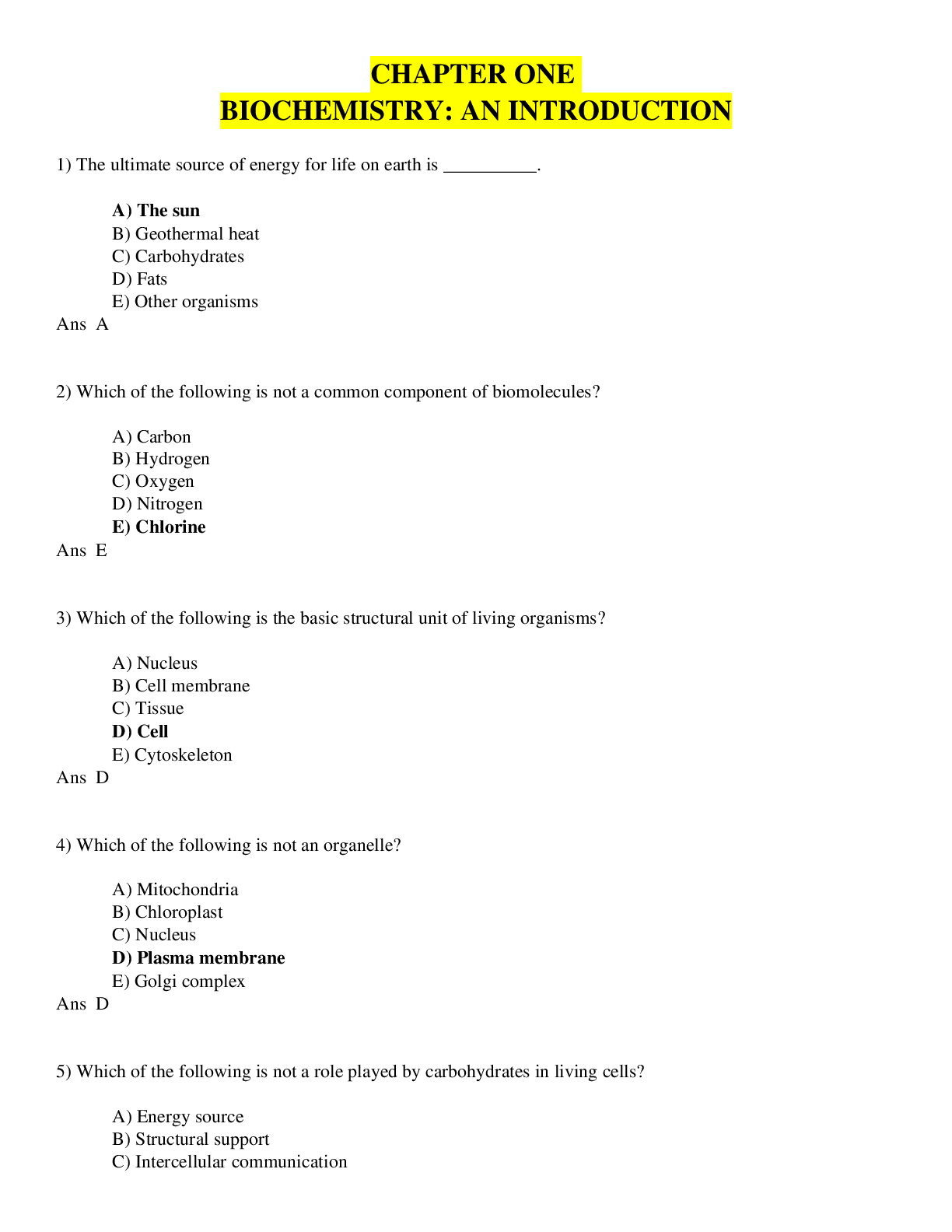
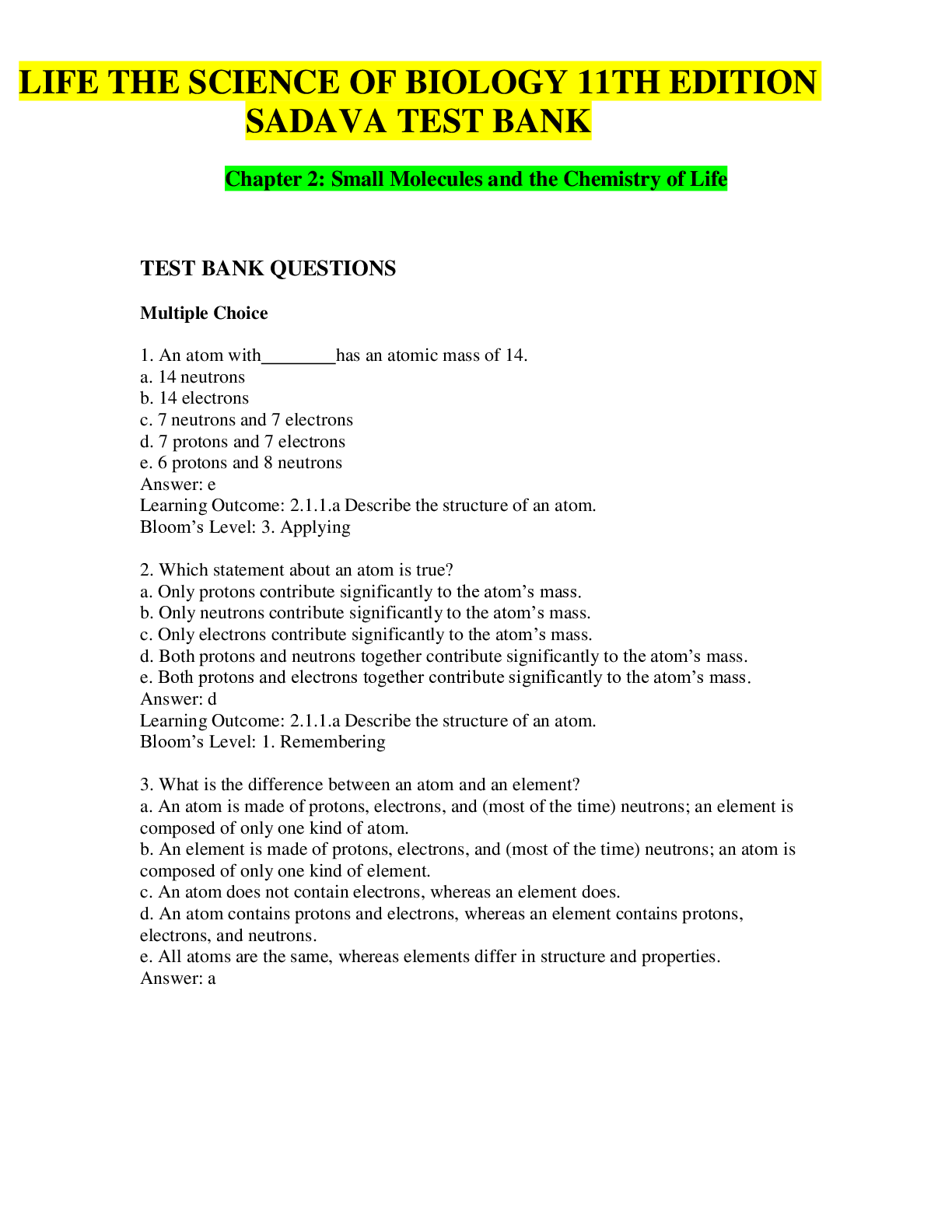
 Test Bank With Rationales.png)


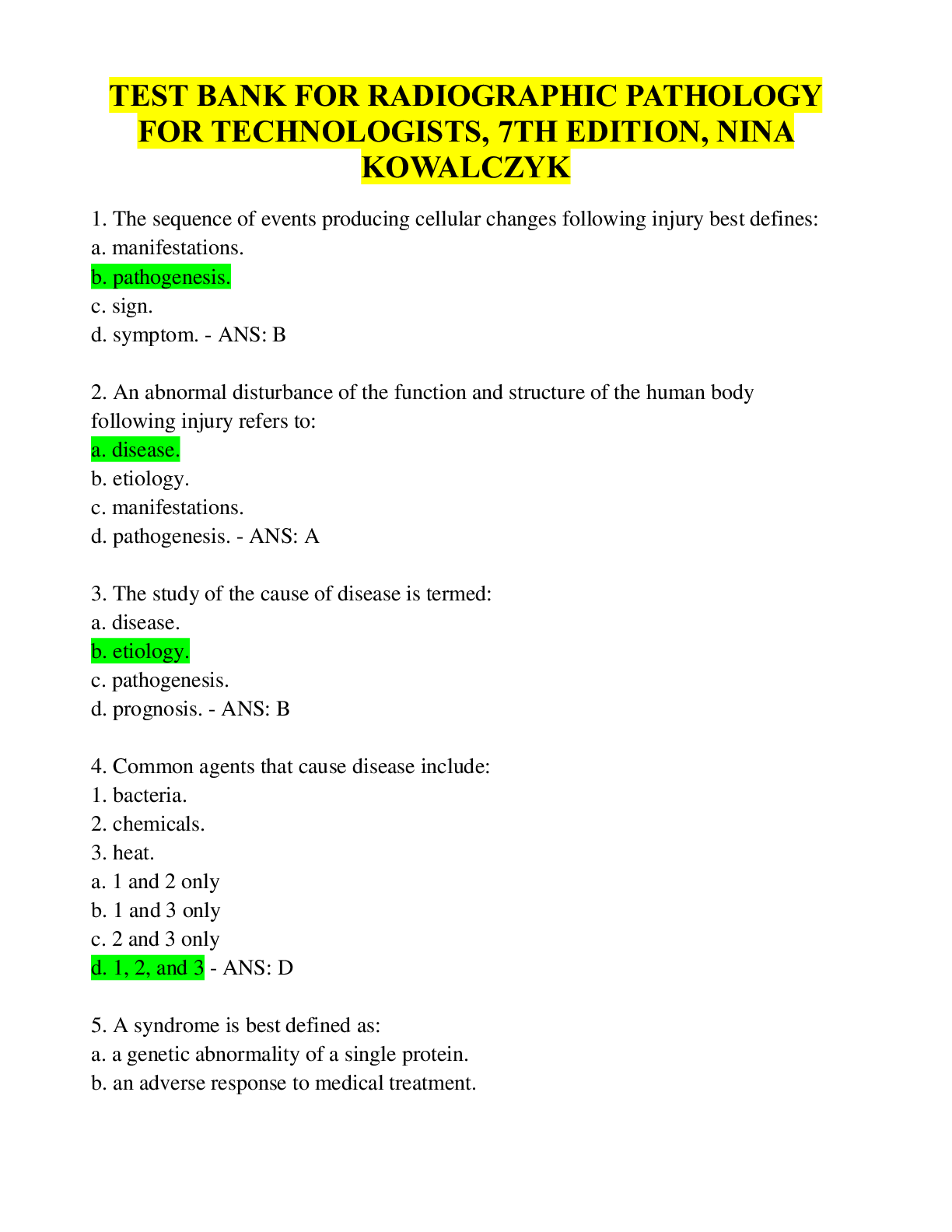
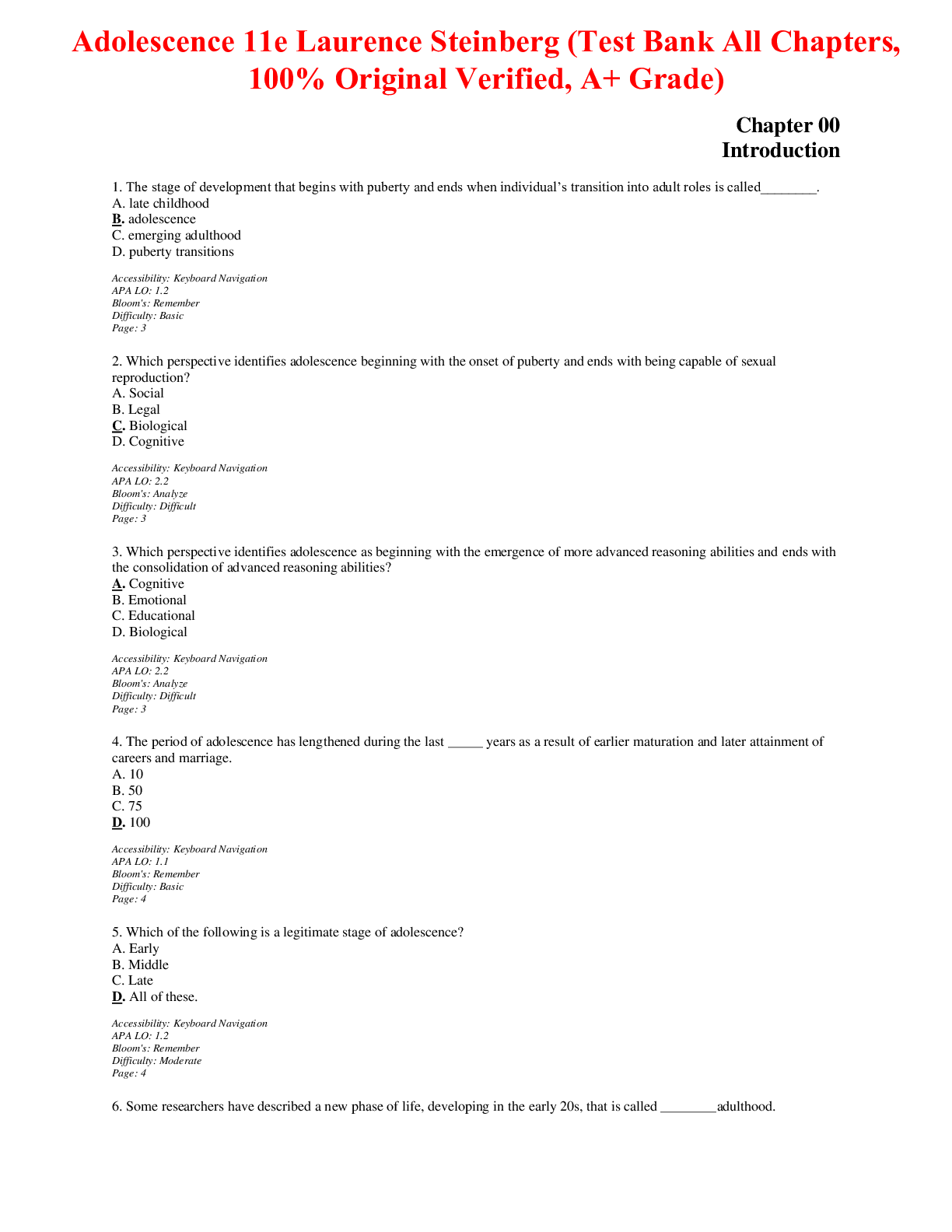



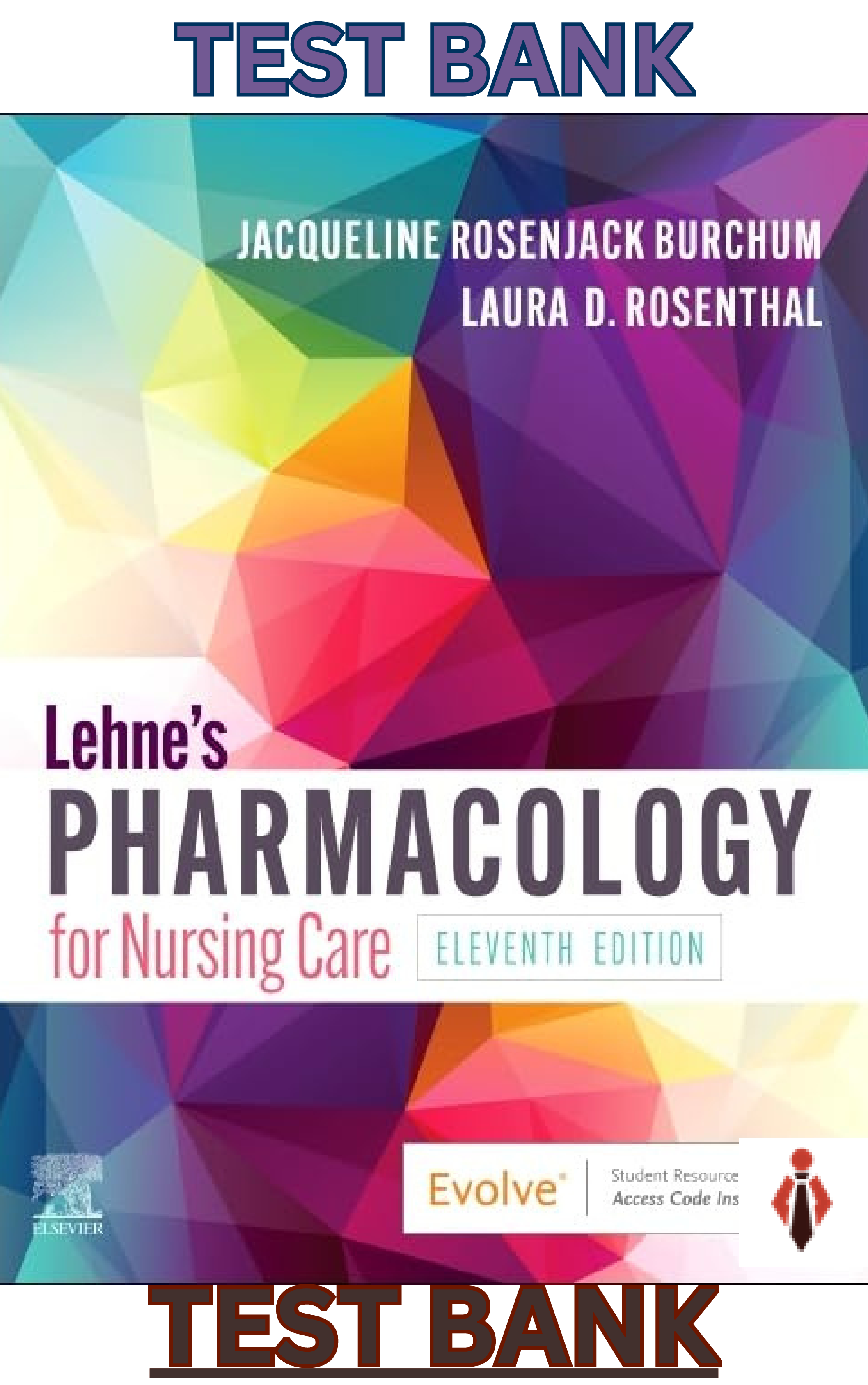
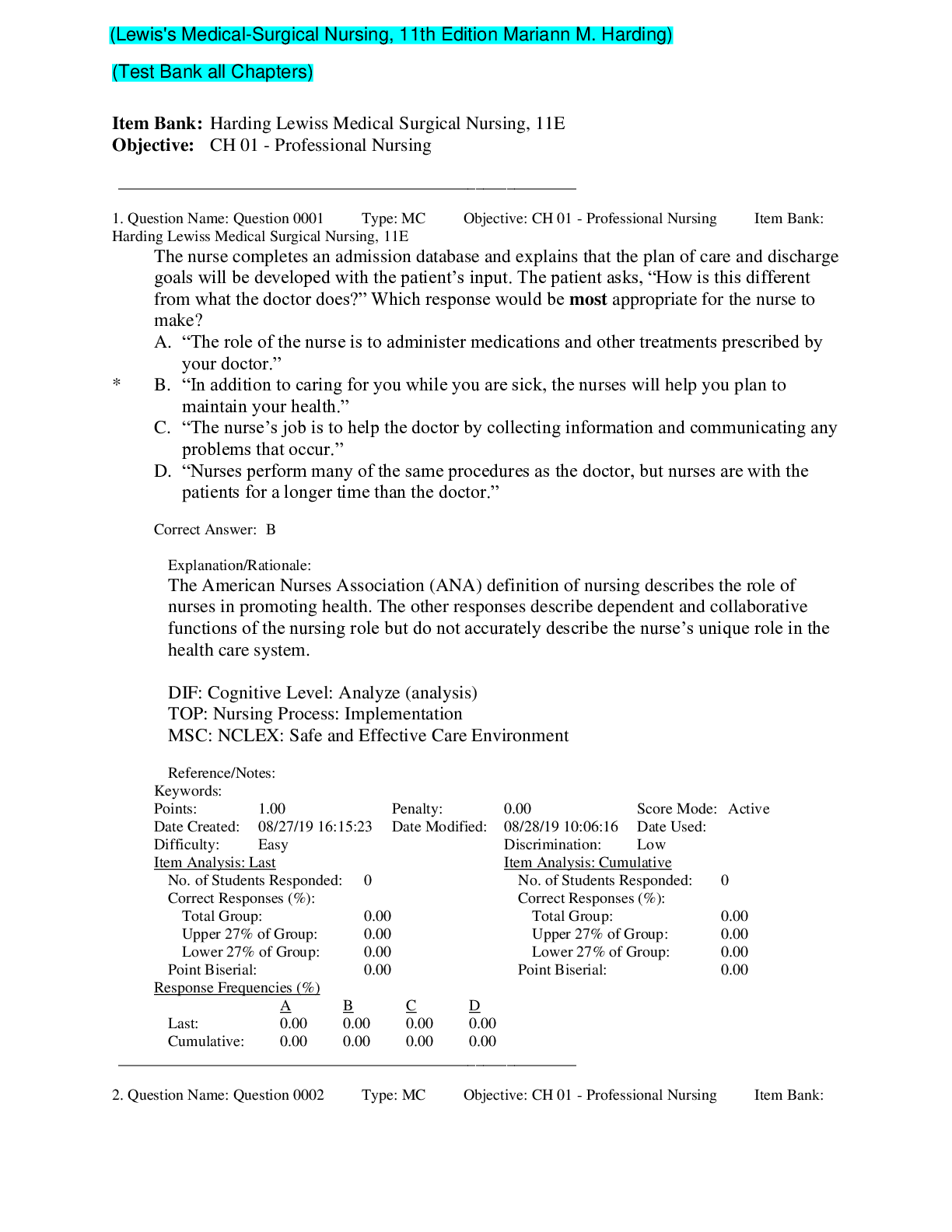
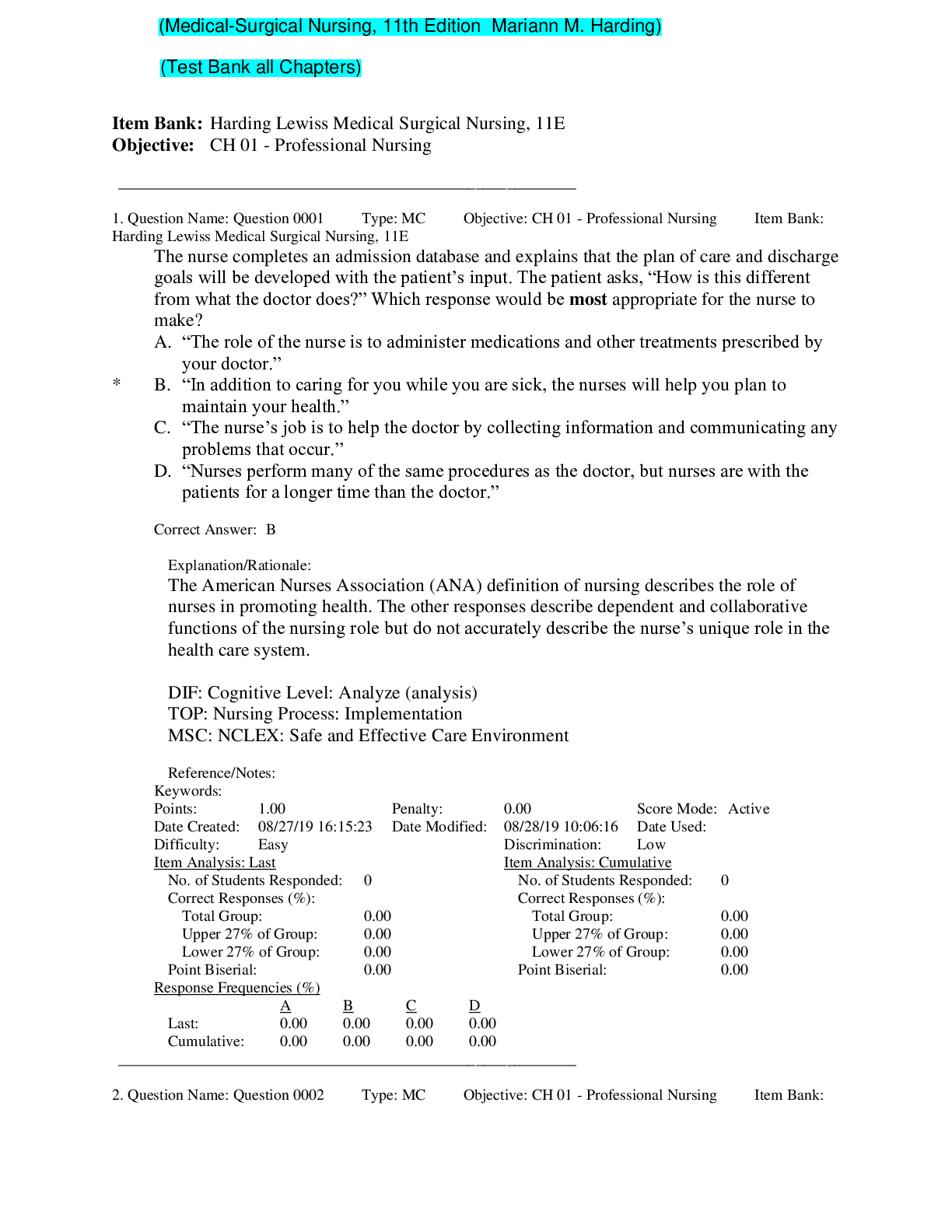
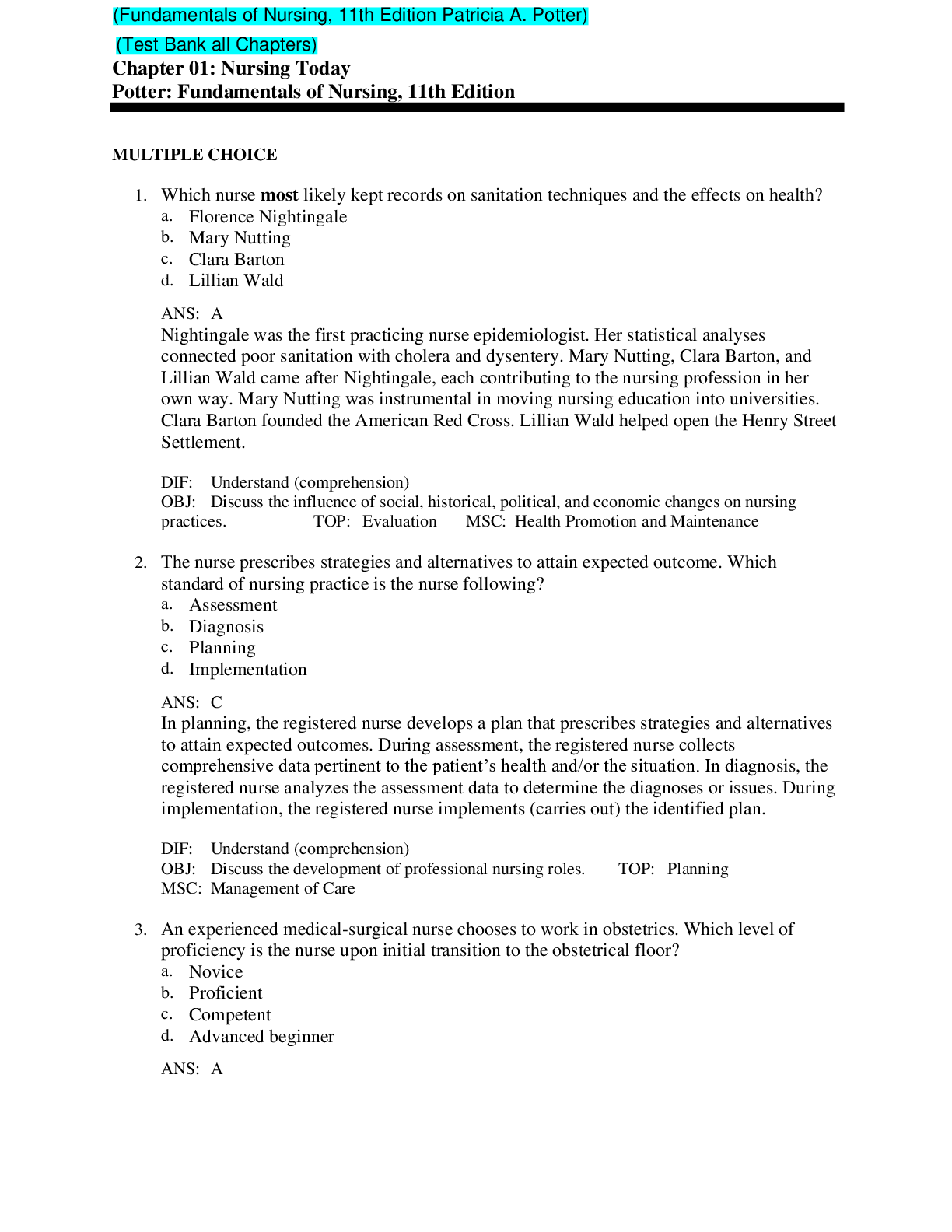
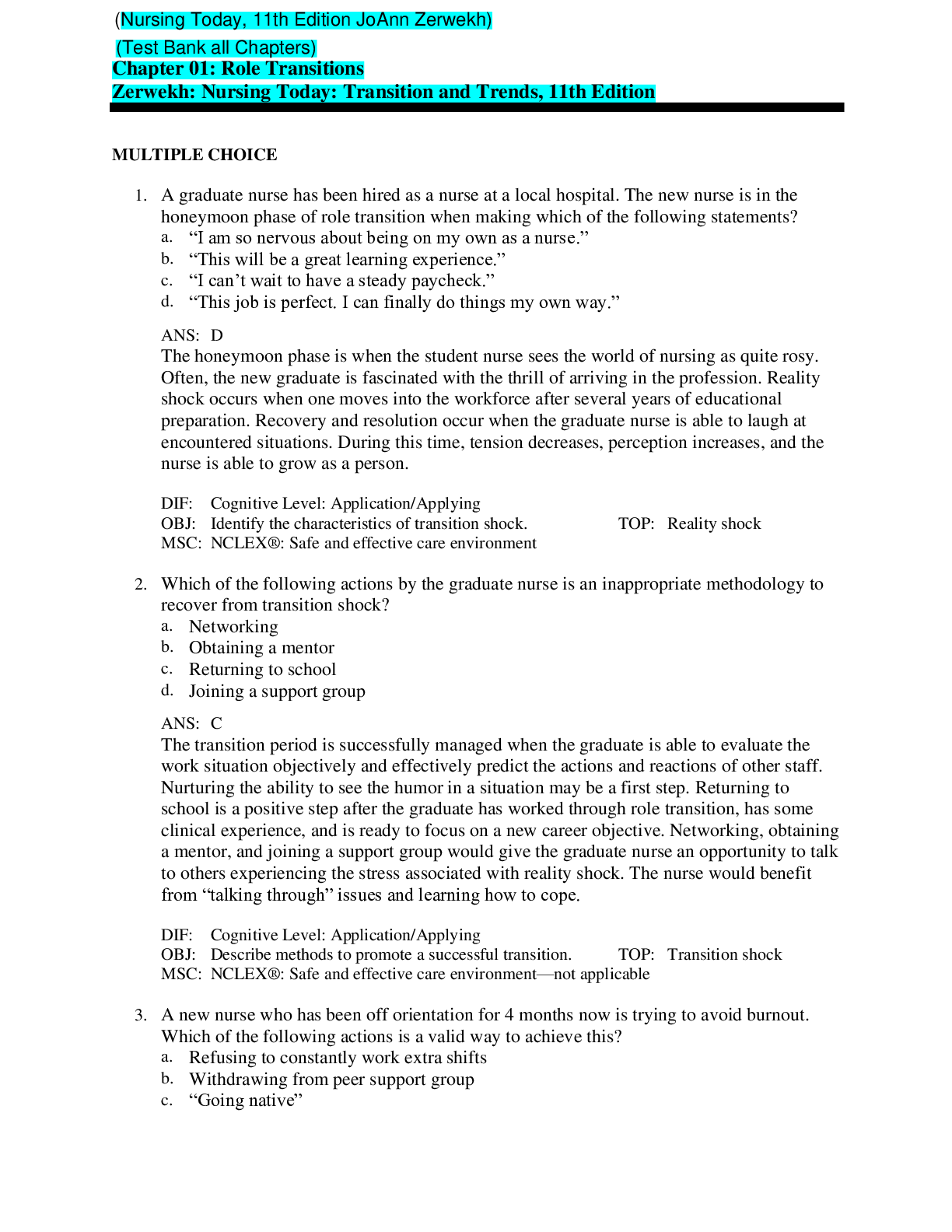
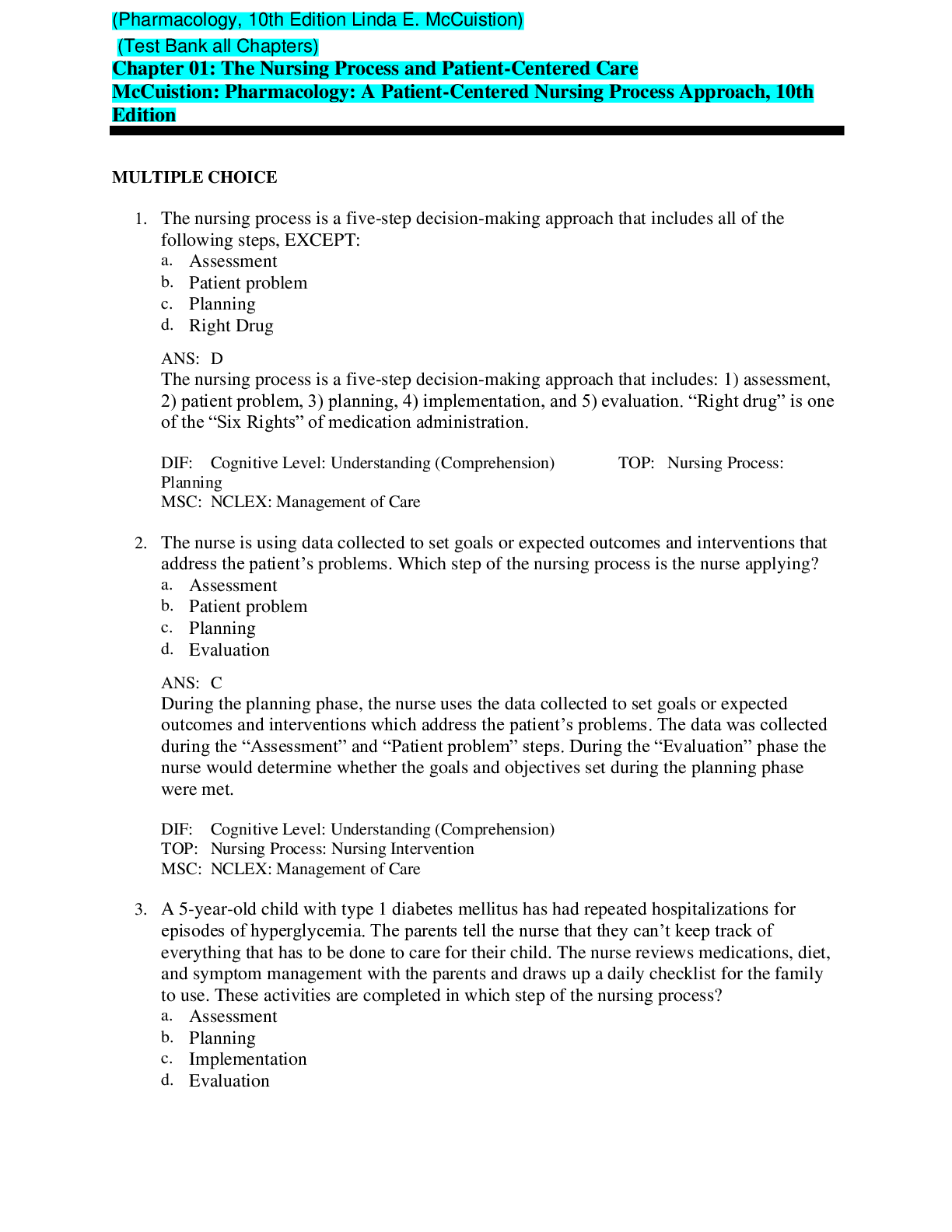
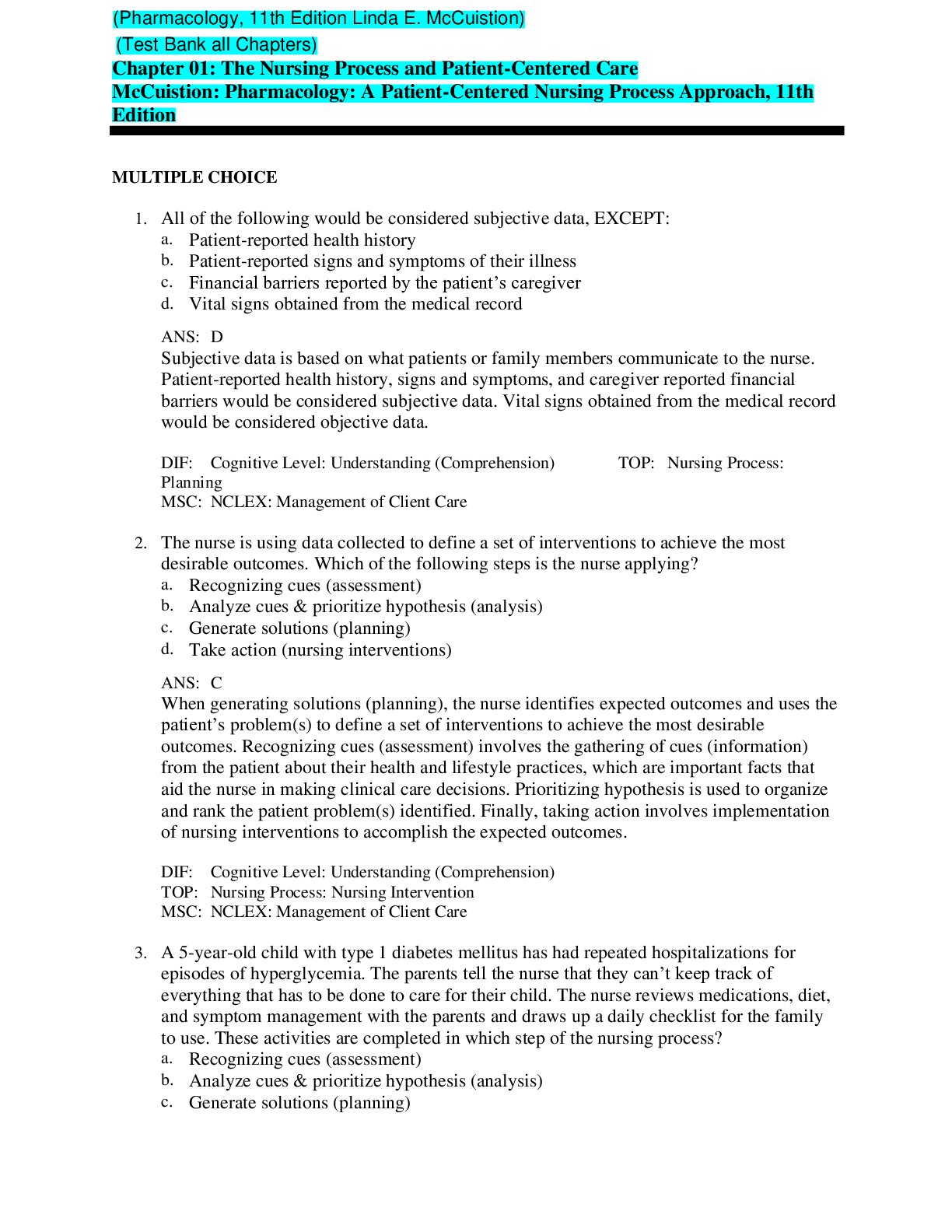
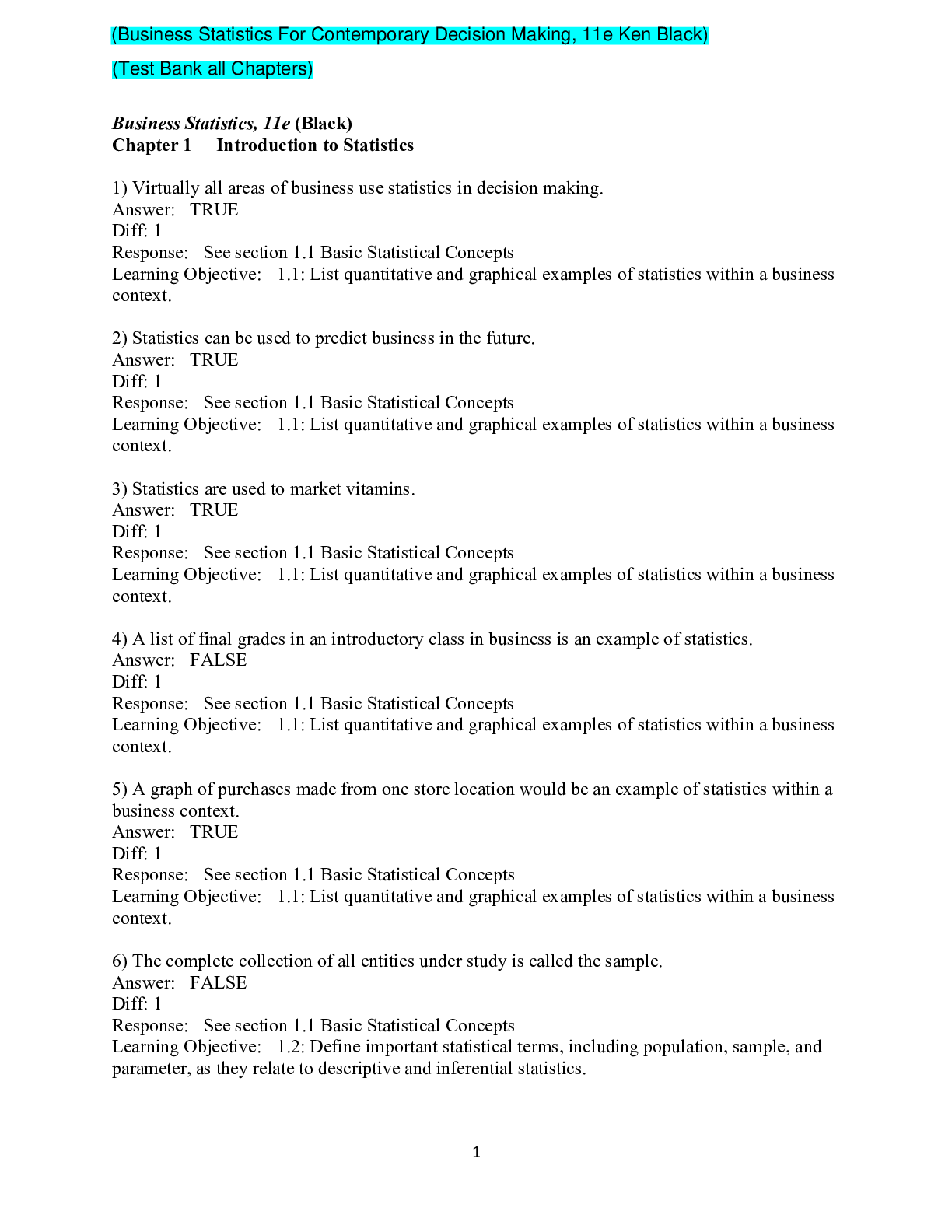
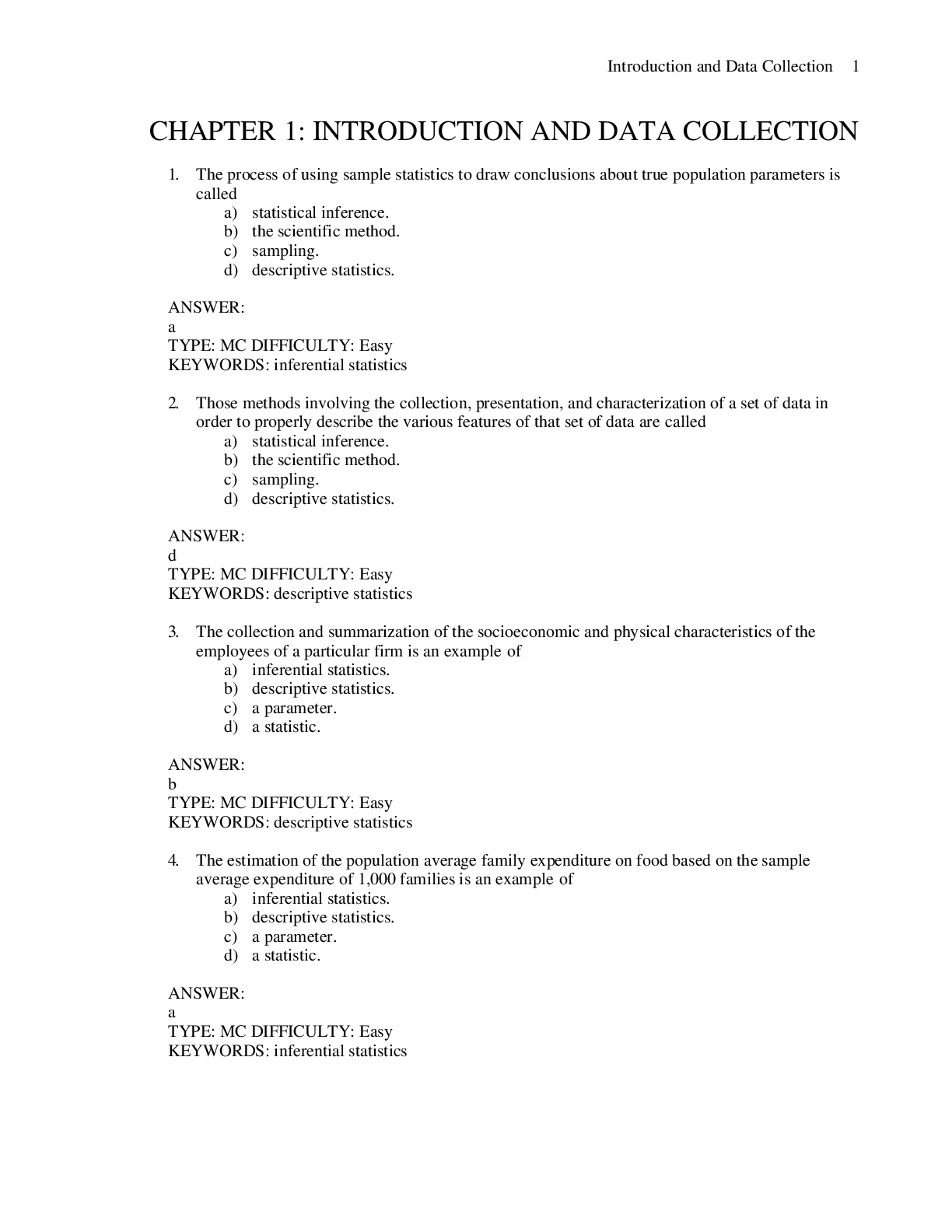


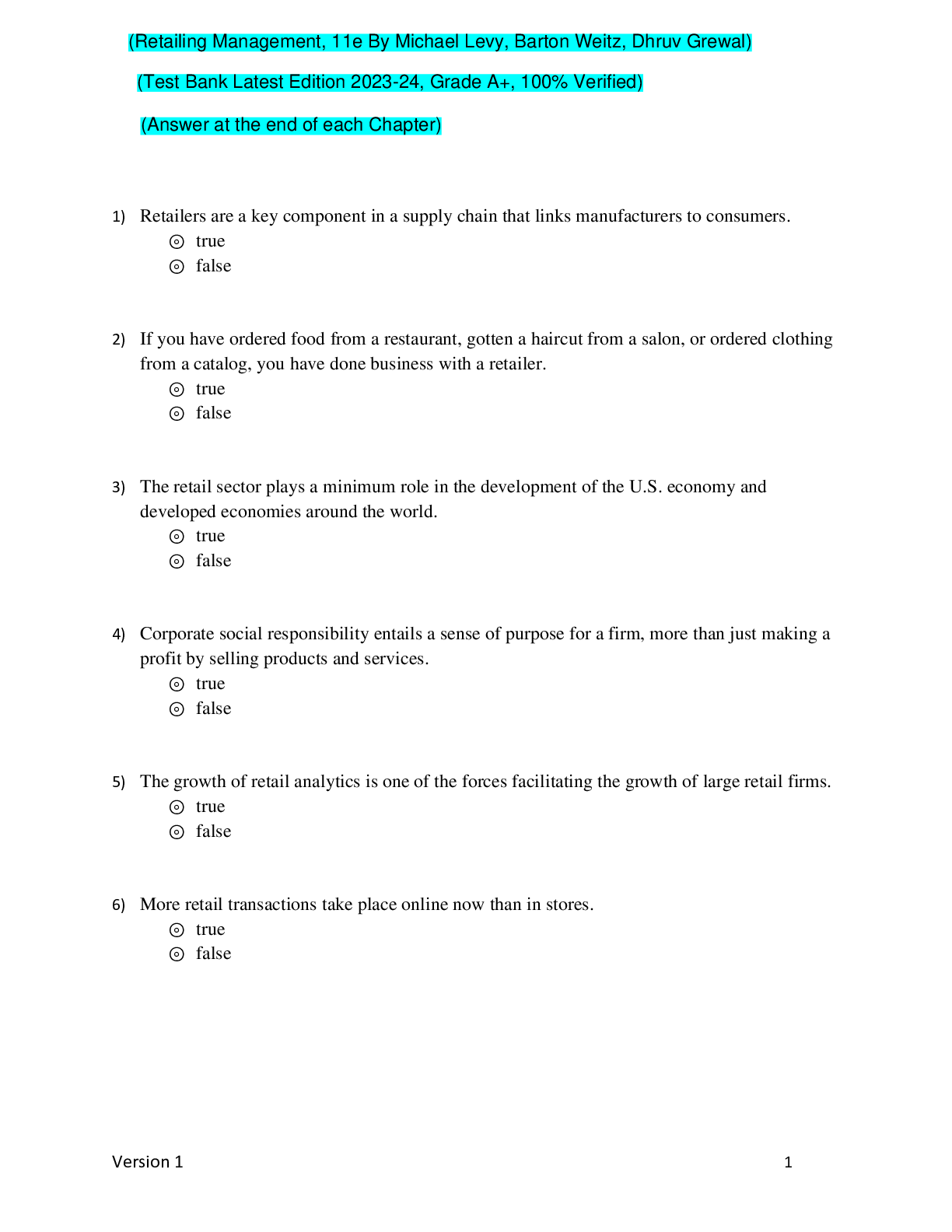

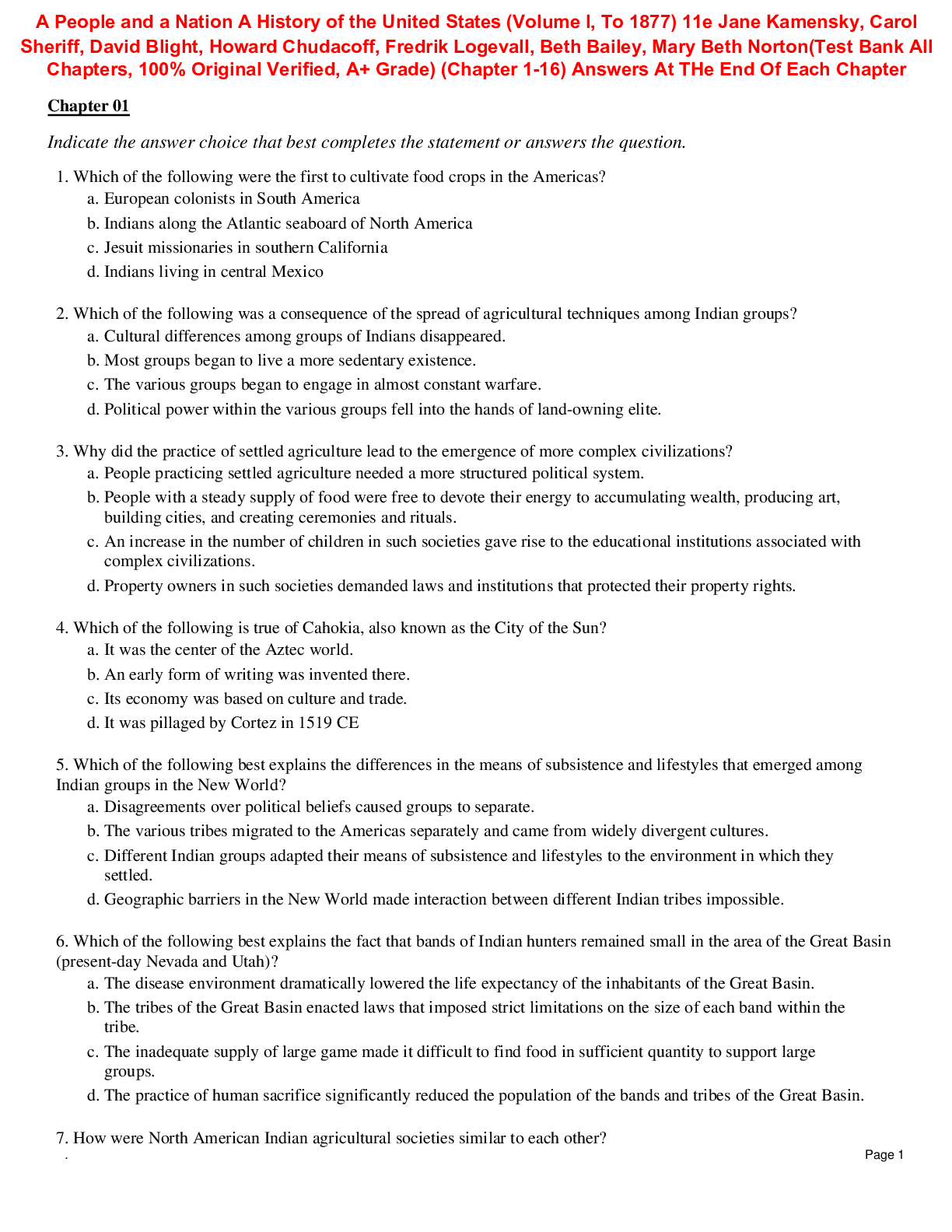
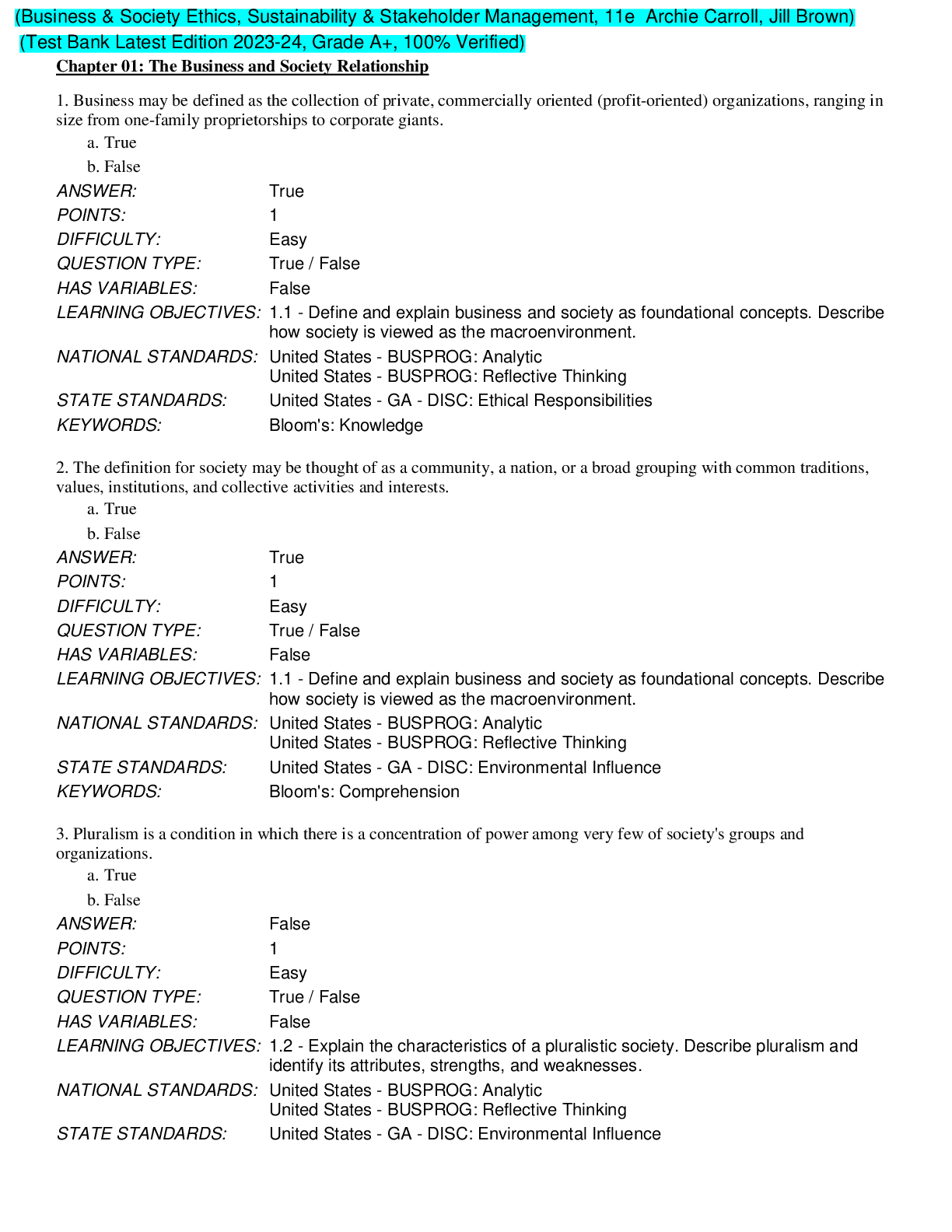
.png)

